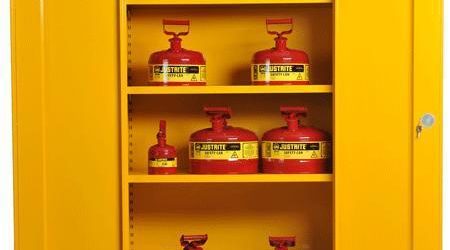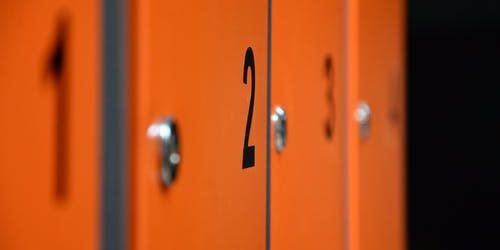Purchasing guide: Choose your office and warehouse heaters with Manutan
Comfortable temperatures play a major role in the quality of life at work. Exposure to cold can affect the health and performance of your employees. By equipping your office or warehouse with suitable heating, you can ensure your teams enjoy optimal working conditions. If the purchase price of office or warehouse heaters is a factor, their cost in terms of energy consumption should also be taken into consideration. Nowadays, there are many types of heaters: gas, electric, oil, fan, ceramic, adjustable, indoor, or outdoor… We will help you to assess your needs, to get to know the characteristics of each model, and to better understand the issues at stake when it comes to heating the workplace.
What factors should be considered when choosing office and warehouse heaters?
When purchasing heaters for your office or your warehouse, it’s important to take into account the requirements of your premises and the needs of your employees. Here’s a list of things to be assessed beforehand in order to choose the most suitable professional heaters.
The power of the heaters
The performance of different models of heaters depends on their power. To know which power to choose, you have to take into consideration the space that will be heated. In a well-insulated room with a ceiling height of 2.5 m, 700 to 1000 W can heat 10 m². For rooms larger than 30 m², it is recommended to install two heating units.
Characteristics of the space to be heated
Taking into account the layout of the space and the location of openings and air flows within buildings is essential. The placement of doors and windows plays a role in natural temperature regulation. It is also essential to find out about the insulation performance of the premises.
Controlling the cost of heating in terms of energy consumption
One way to control energy costs is to assess the quality of the insulation in the building concerned. If it needs improving, double glazing, for example, will help to conserve heat.
Changing the entire heating system of a building if the old radiators consume too much energy is also part of an energy-saving strategy.
The occupancy rate of buildings
The selection of a heating solution depends on the occupancy rate and the activities carried out in the room. When selecting office or warehouse heating, it is important to consider the number of employees and visitors who use the space to be heated. To avoid unnecessary energy expenditure, a building that is not used very often can be equipped with supplementary radiators, which can be switched on occasionally and produce heat quickly. A space that is occupied for a large part of the week is best equipped with heaters that provide a high degree of thermal inertia.
Office or warehouse heaters: What are the products available?
Among the wide product range of heaters available, each type meets a specific need and use. It is therefore important to determine which model will best suit the environment and the needs of the users.
Fan heaters
A fan heater is best used in a small office, changing room, or kitchen. This product is available in small, lightweight, portable versions or as wall-mounted versions. Its price varies according to its power, which is directly related to the volume of the area to be heated.
Ceramic fan heaters have the advantage of providing even and constant heat. They are also energy efficient. Oscillating fan heaters provide a good distribution of warm air throughout the room.
Gas heaters
Forced air heaters are particularly suitable for large volumes and industrial environments. With manual or automatic ignition, these gas heaters can heat areas of up to 750 m3, provided the room where they are located is properly insulated. Equipped with a fan, they expel up to 2,300 m3 of warm air per hour. They can be fitted with a flexible duct, an accessory that allows hot air to be directed into another room.
Thermostatic radiators are regulated by a thermostat to maintain consistent warmth in business premises. They have the advantage of being efficient in their use of gas. These mobile heaters are attached directly to a propane or butane gas cylinder. Thermostatic radiators are available as indoor or outdoor models.
Patio gas heaters are designed for outdoor use. Their gas cylinder fits into the base. They are portable and can easily be moved thanks to integrated wheels. They do not require an electrical connection.
Electric heaters
Electric patio heaters can be either free-standing or suspended. They can also be used outdoors, but only in dry weather.
Warehouses can be equipped with electric heaters of various types: forced air heaters, radiators, panel heaters, infrared heaters, or radiant heaters. Some warehouse heaters, such as ceramic heaters, can be used in the same way as a conventional fan for a cooling effect.
In the office, select aesthetically pleasing electric heaters and radiators that match the existing furniture. It is recommended to choose appliances with a thermostat which allows for easy temperature control. Some even have a timer. Depending on your needs, you can opt for a mobile electric heater (an oil-filled heater, for example) or a wall-mounted model.
What are the issues at stake in heating a professional environment?
Correct temperature contributes to the well-being and safety of employees at work, as does proper lighting and ergonomic furniture. While the price of office and warehouse heaters is a factor in their selection, the protection of staff from low temperatures must also be taken into account.
Properly equip offices and warehouses with heaters to support CSR
The CSR (Corporate Social Responsibility) policy formalises a company’s commitment to sustainable development issues. To provide efficient warehouse heating equipment for your staff is to contribute to a ‘Well-working’ approach.
Ensuring the comfort and safety of employees is part of social responsibility, one of the three pillars of CSR. A heating system that avoids the over-consumption of resources is also part of the CSR policy, via the pillar of environmental responsibility. In some cases, it may be advisable to replace all office and warehouse heaters with this in mind, if they are old and energy intensive.
What are the consequences of cold at work?
Cold at work can occur both indoors and outdoors and can quickly set in for an operator working at a fixed station and be difficult to feel when active. The possible consequences of exposure to low temperatures at work can be numerous. Accidents such as slipping or loss of dexterity can occur. Prolonged exposure to the cold also increases the risk of musculoskeletal disorders.
In severe cases, hypothermia can occur. This is a reaction of the human body, which is no longer able to regulate its internal temperature. The consequences can be serious and long-term. The warning signs of hypothermia are severe fatigue, cold skin, numbness, drowsiness, disorientation, and even loss of consciousness.
How to protect your employees from cold at work
Several preventive measures can be taken to improve safety in the cold at work:
- Complying with the European directive 89/656 EEC, which sets out the obligations of companies with regard to extreme cold equipment;
- Providing a heating system for the workplace and the break room as well as the changing rooms;
- Adapting schedules to avoid working in the cold;
- Preventing the isolation of employees in an environment where the cold can be a hazard;
- Informing employees about the risks associated with cold at work;
- In areas exposed to the cold, install non-slip flooring;
- Training first aid staff in the care of cold-related illnesses.
Manutan has selected a range of heating solutions for a variety of heating requirements. Follow our advice to find the most suitable products for your business




